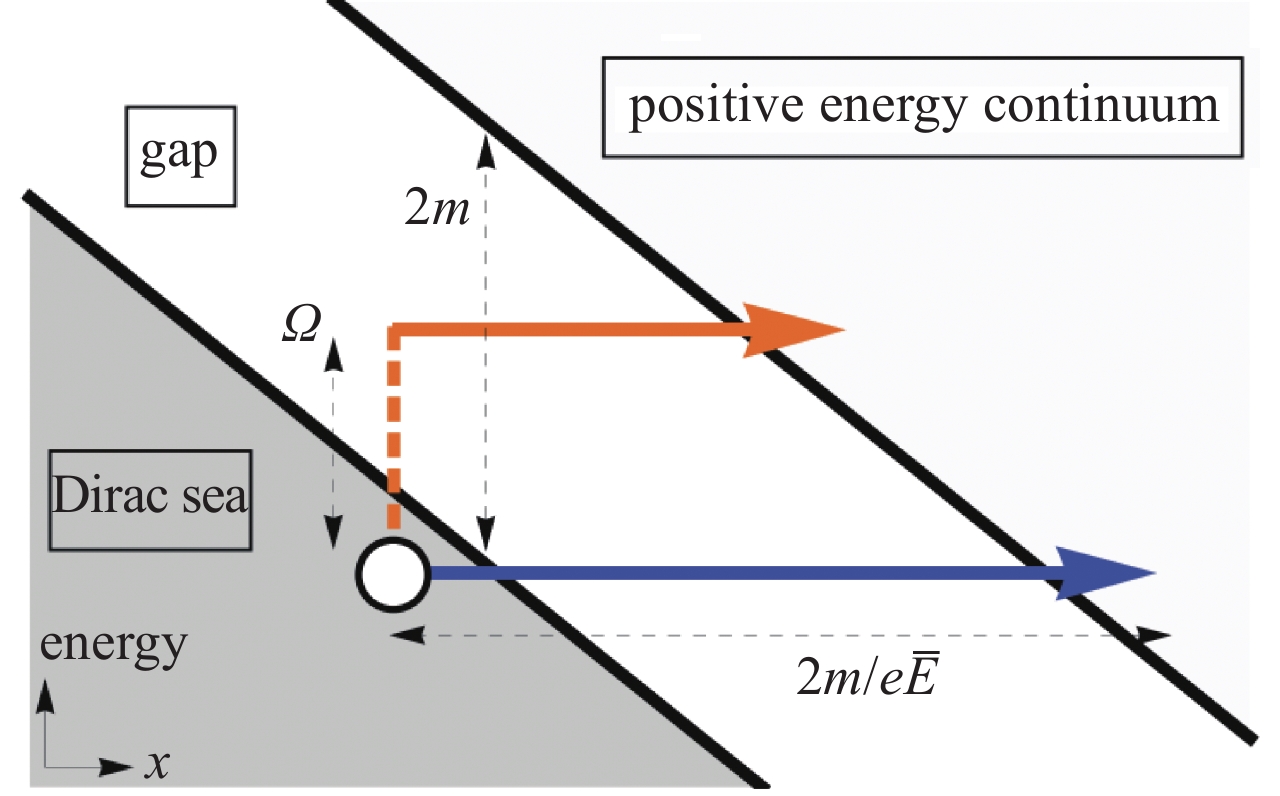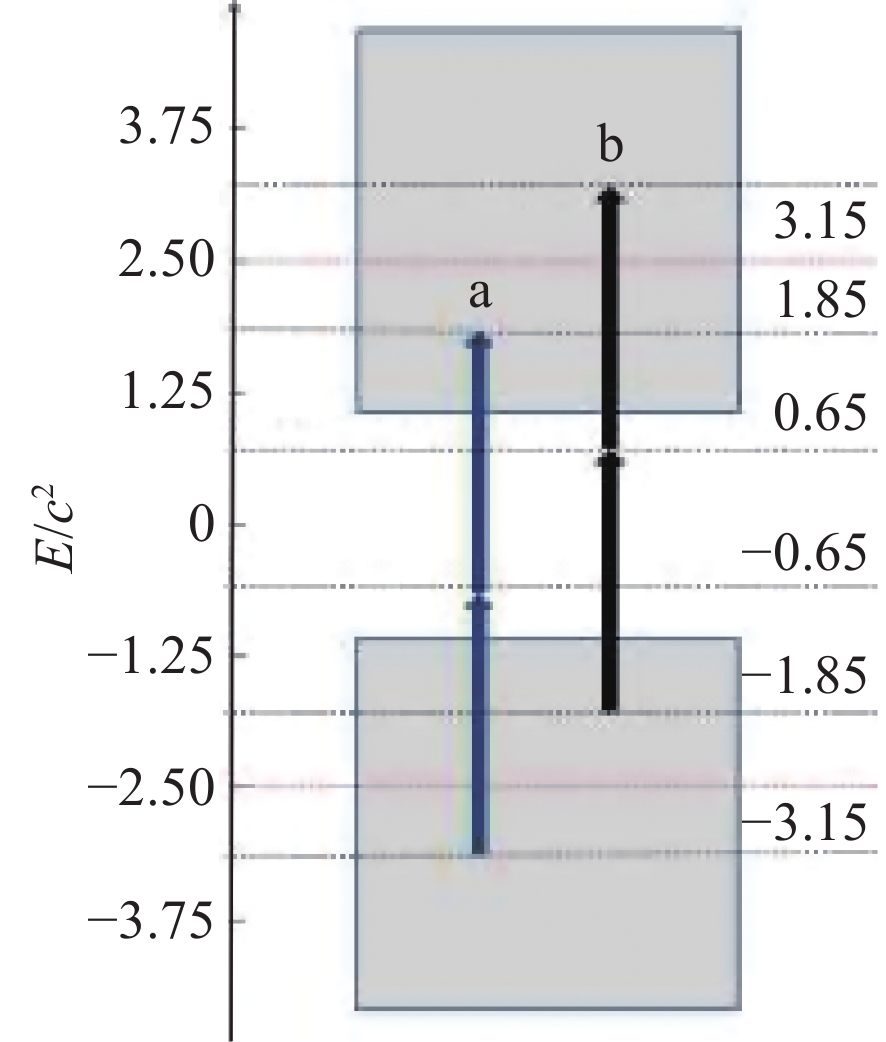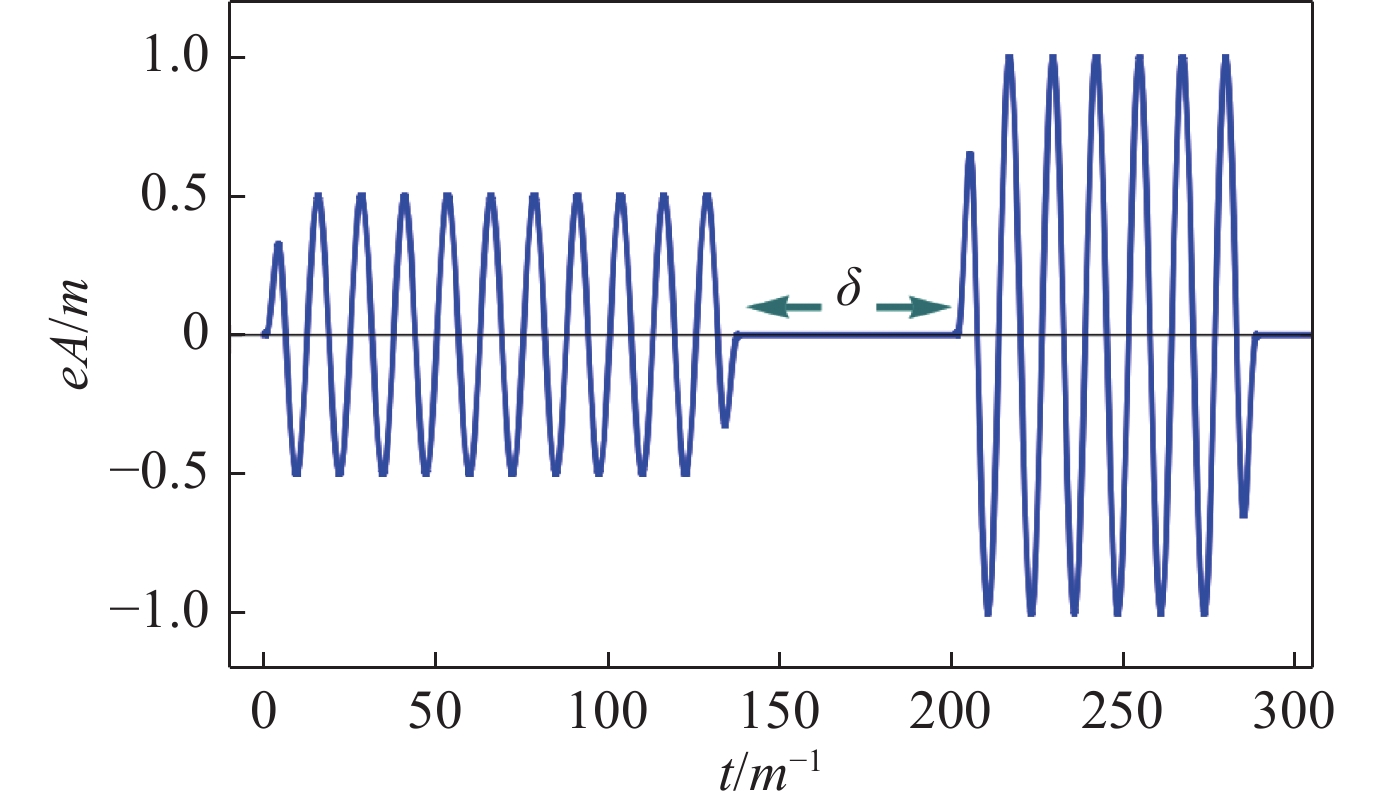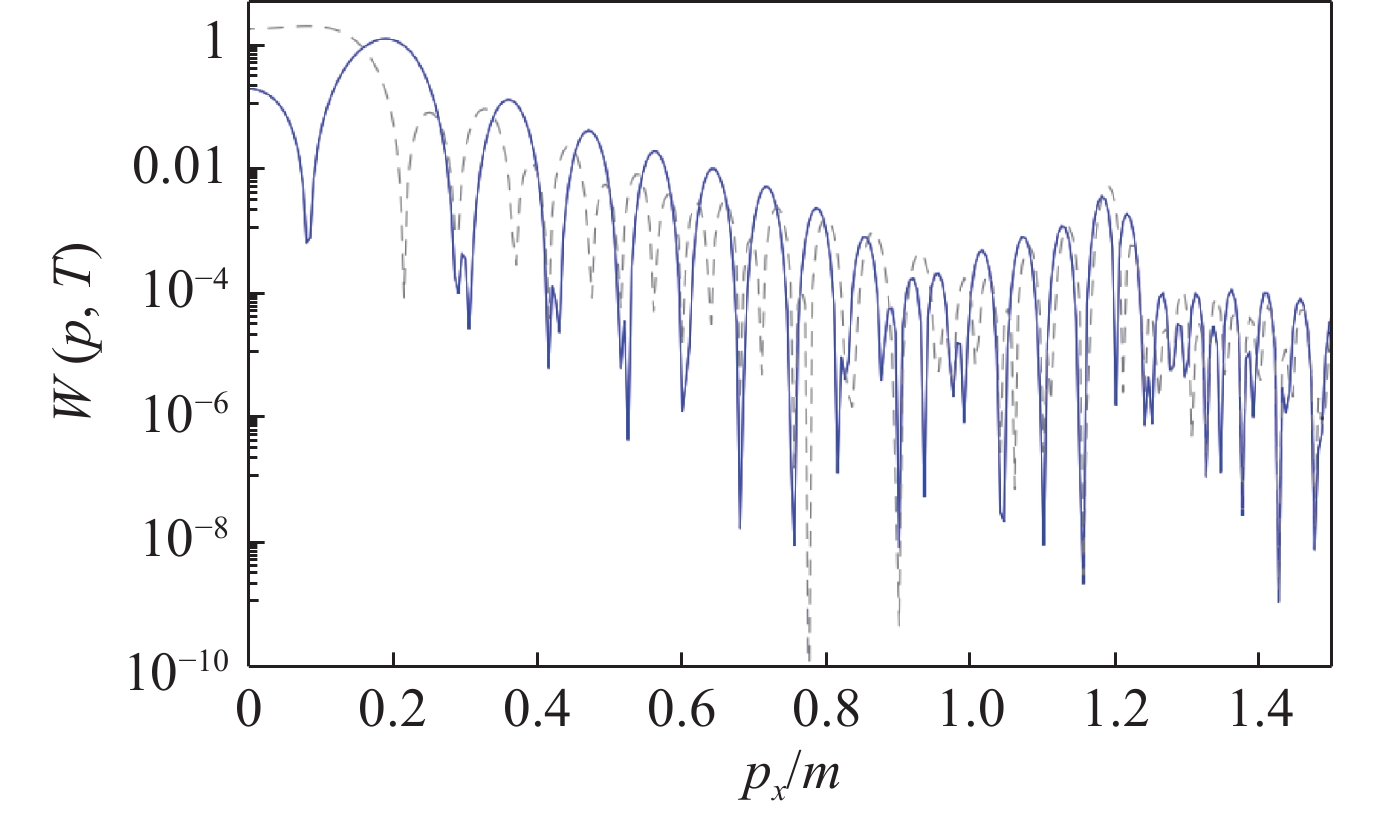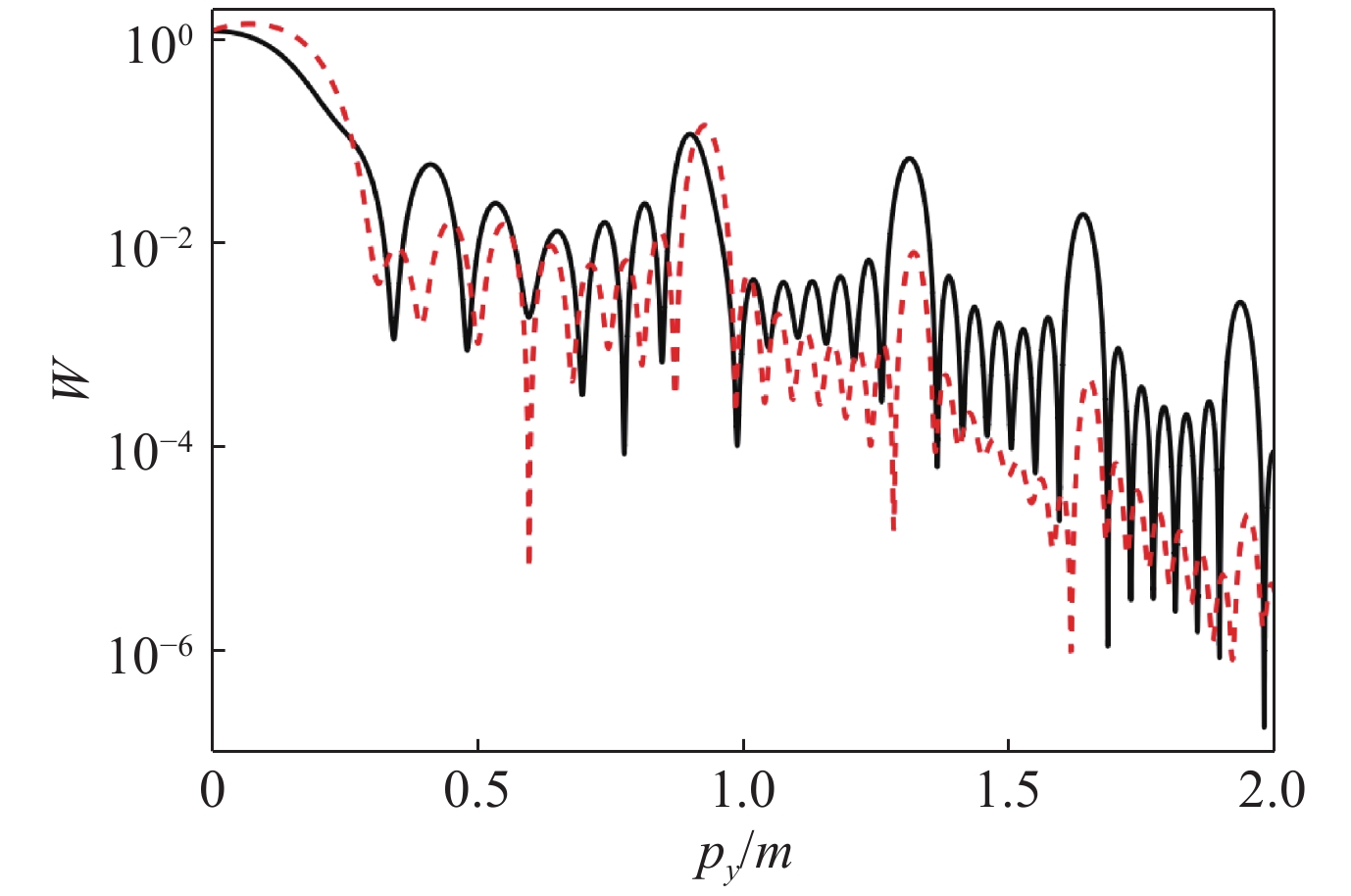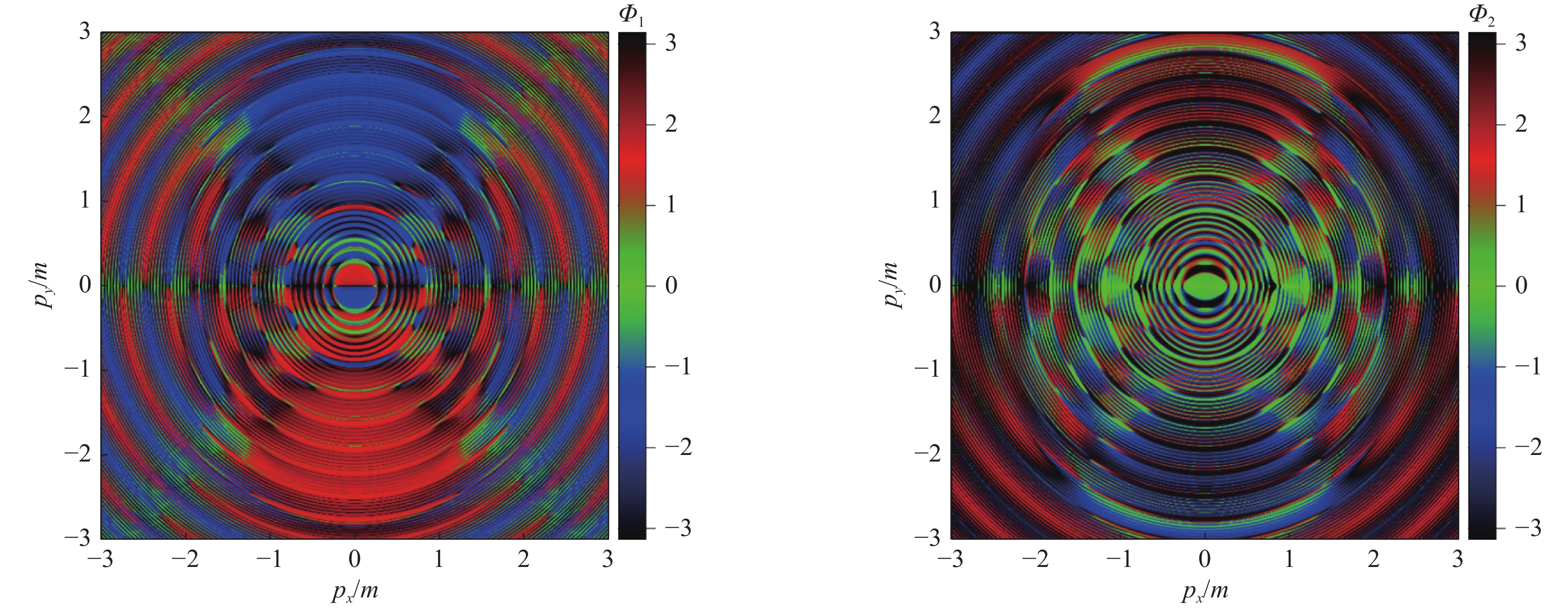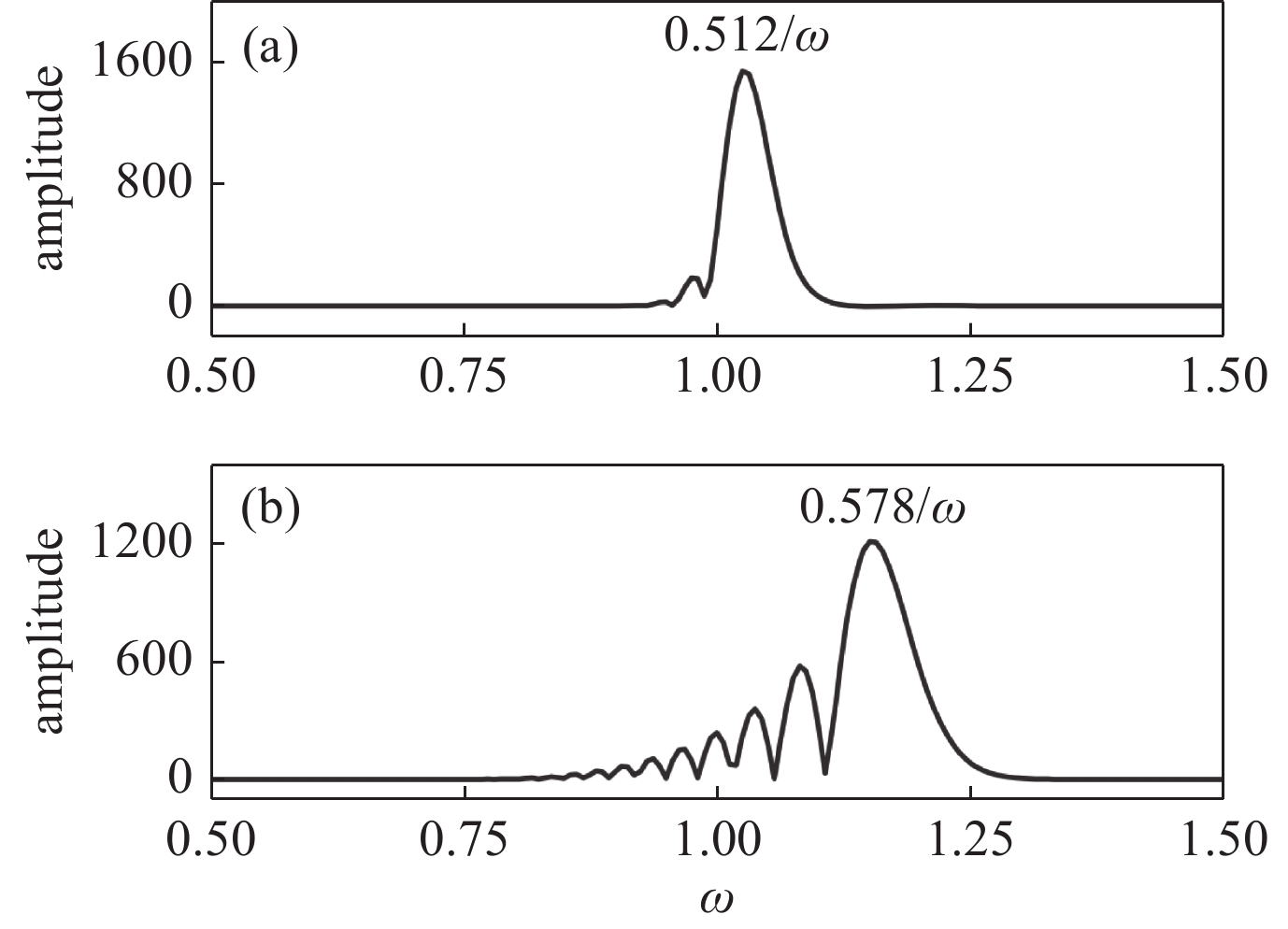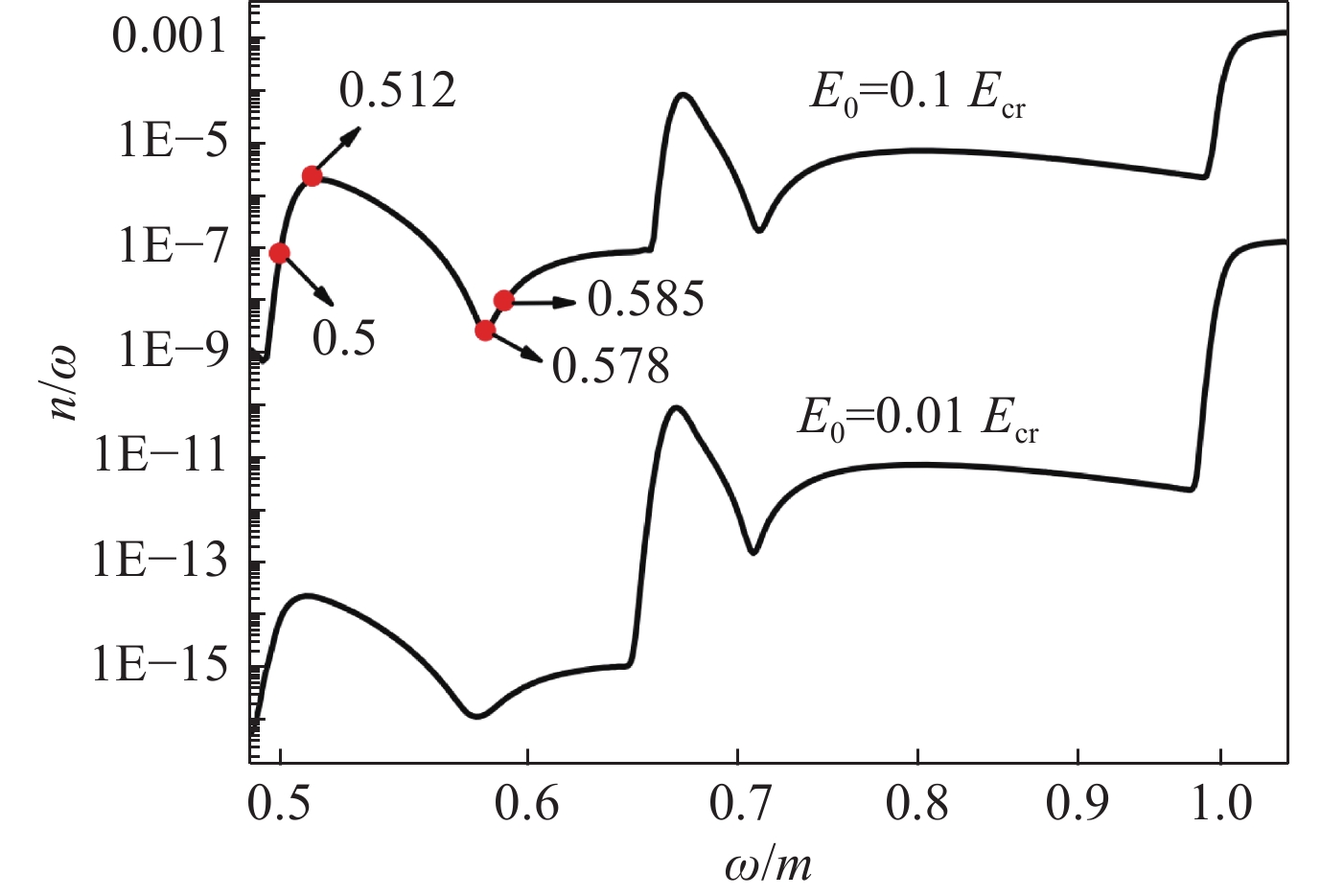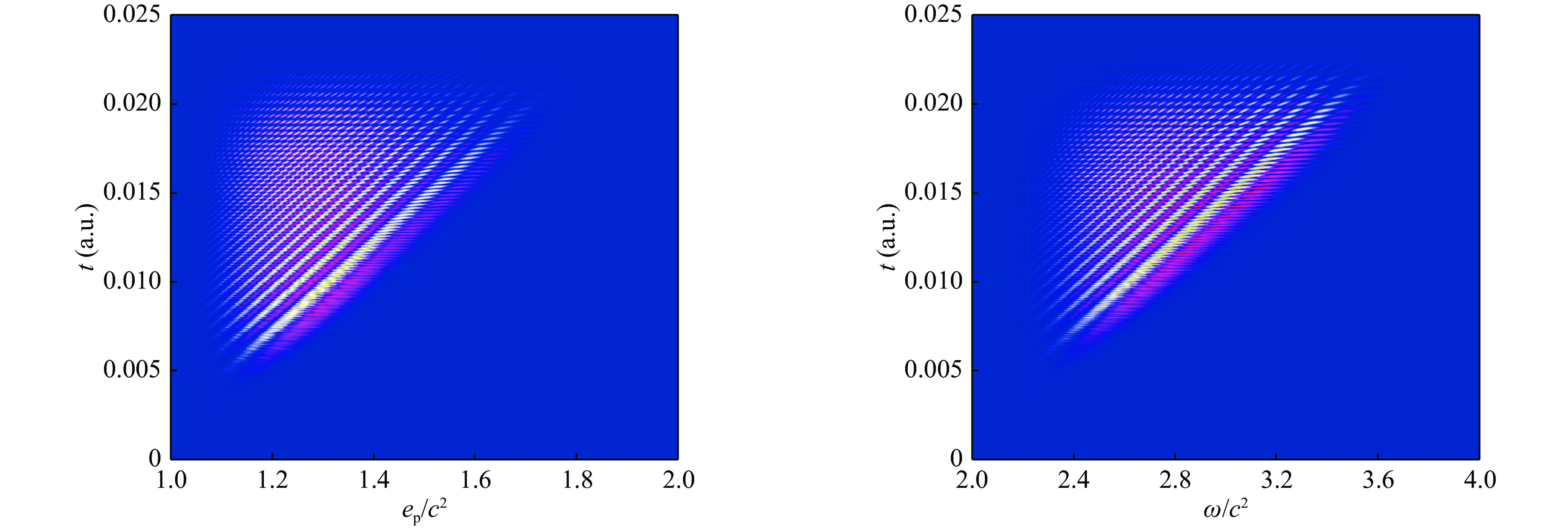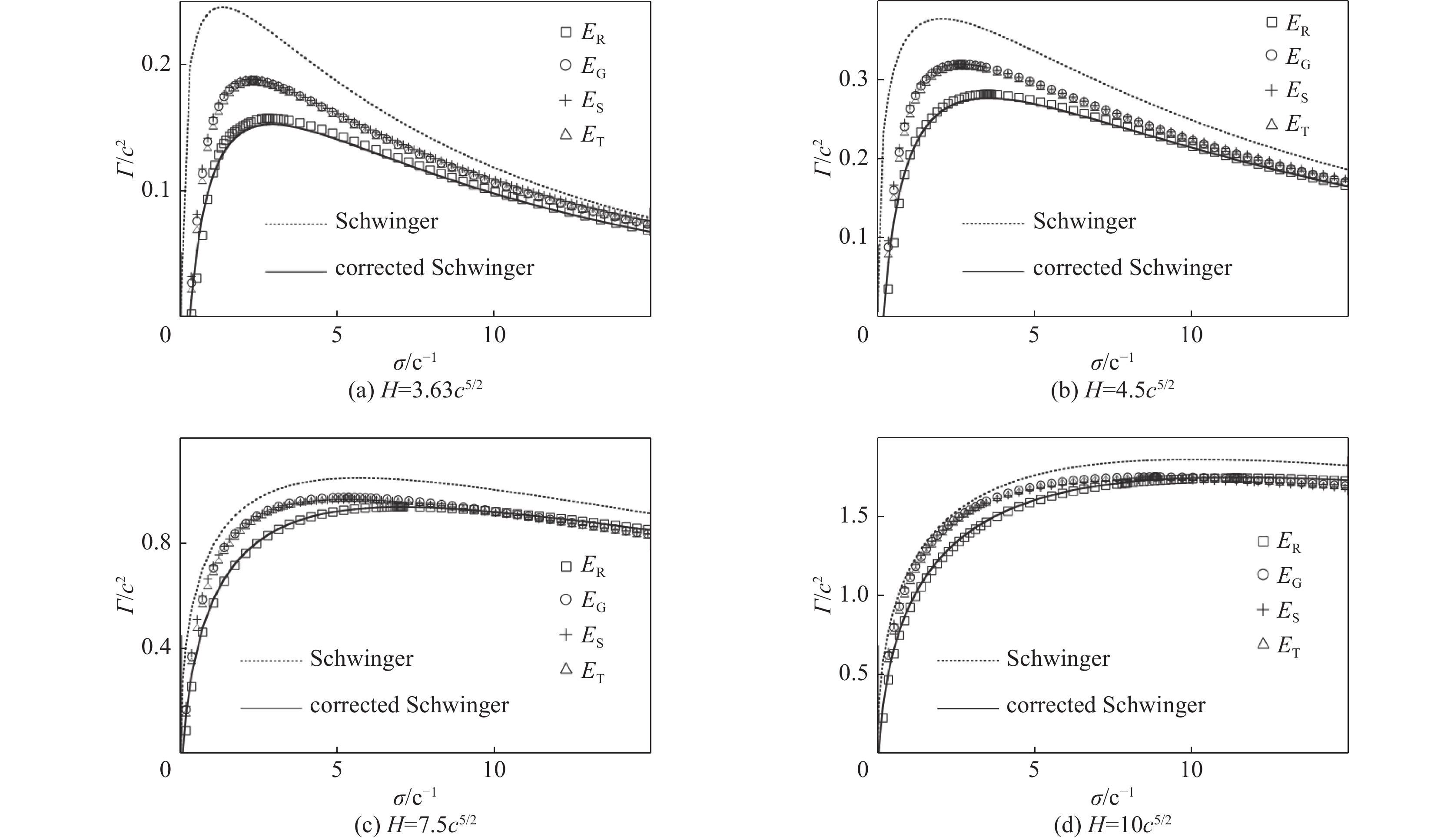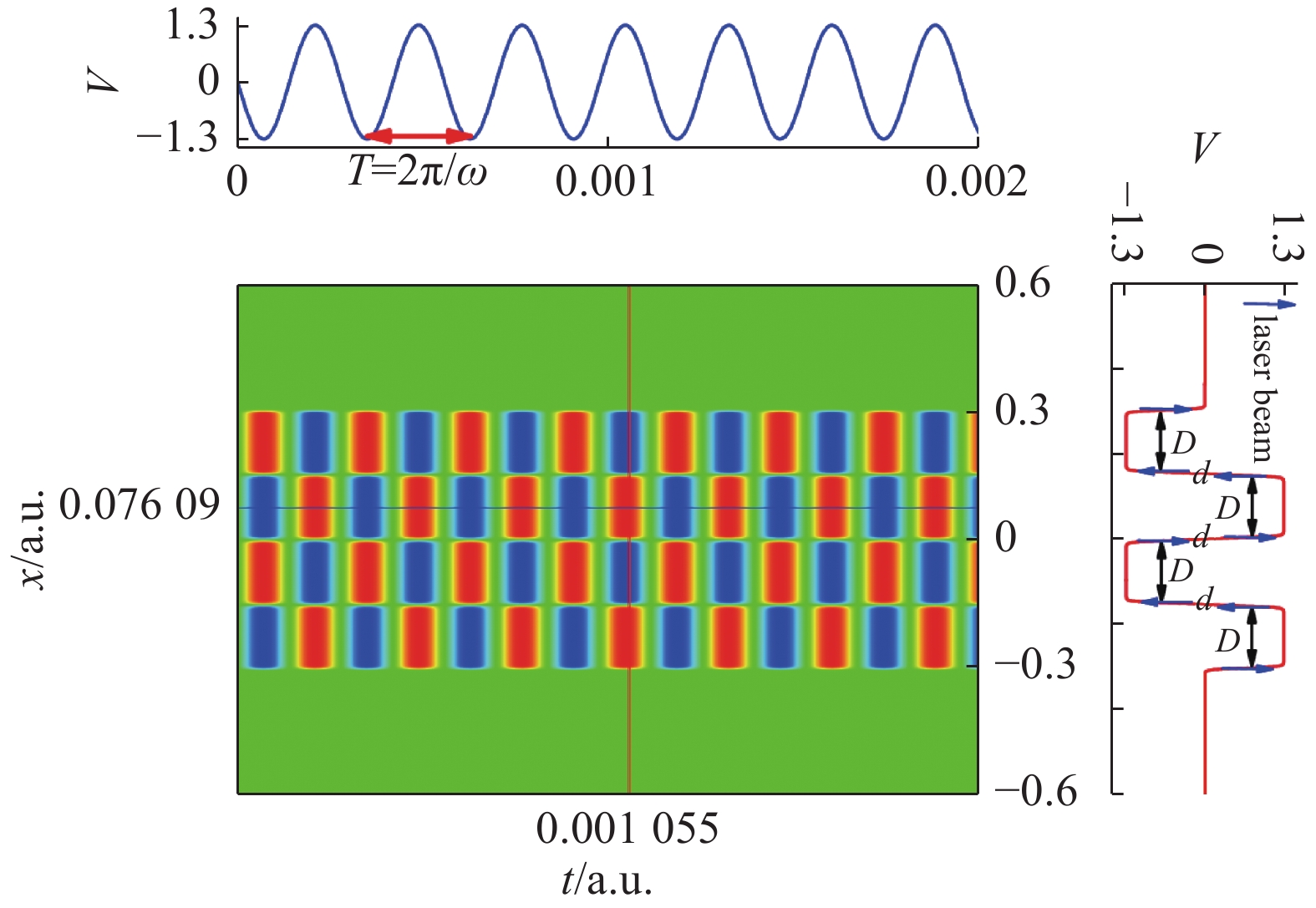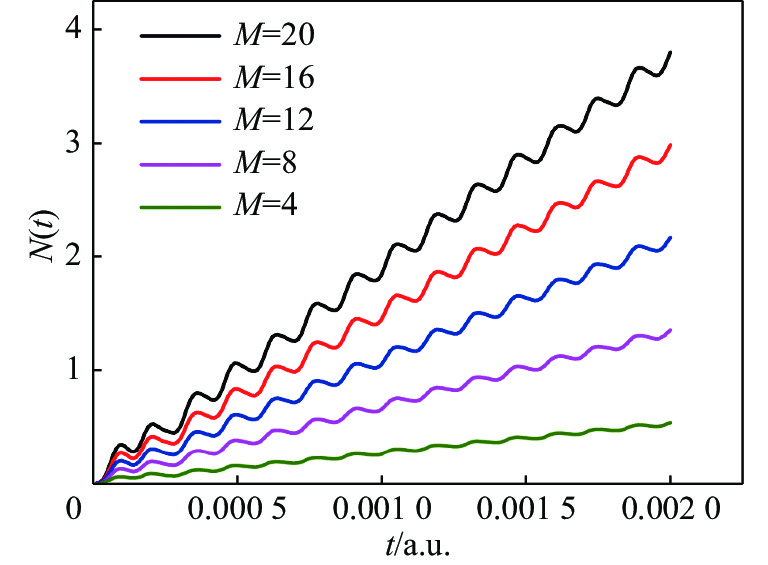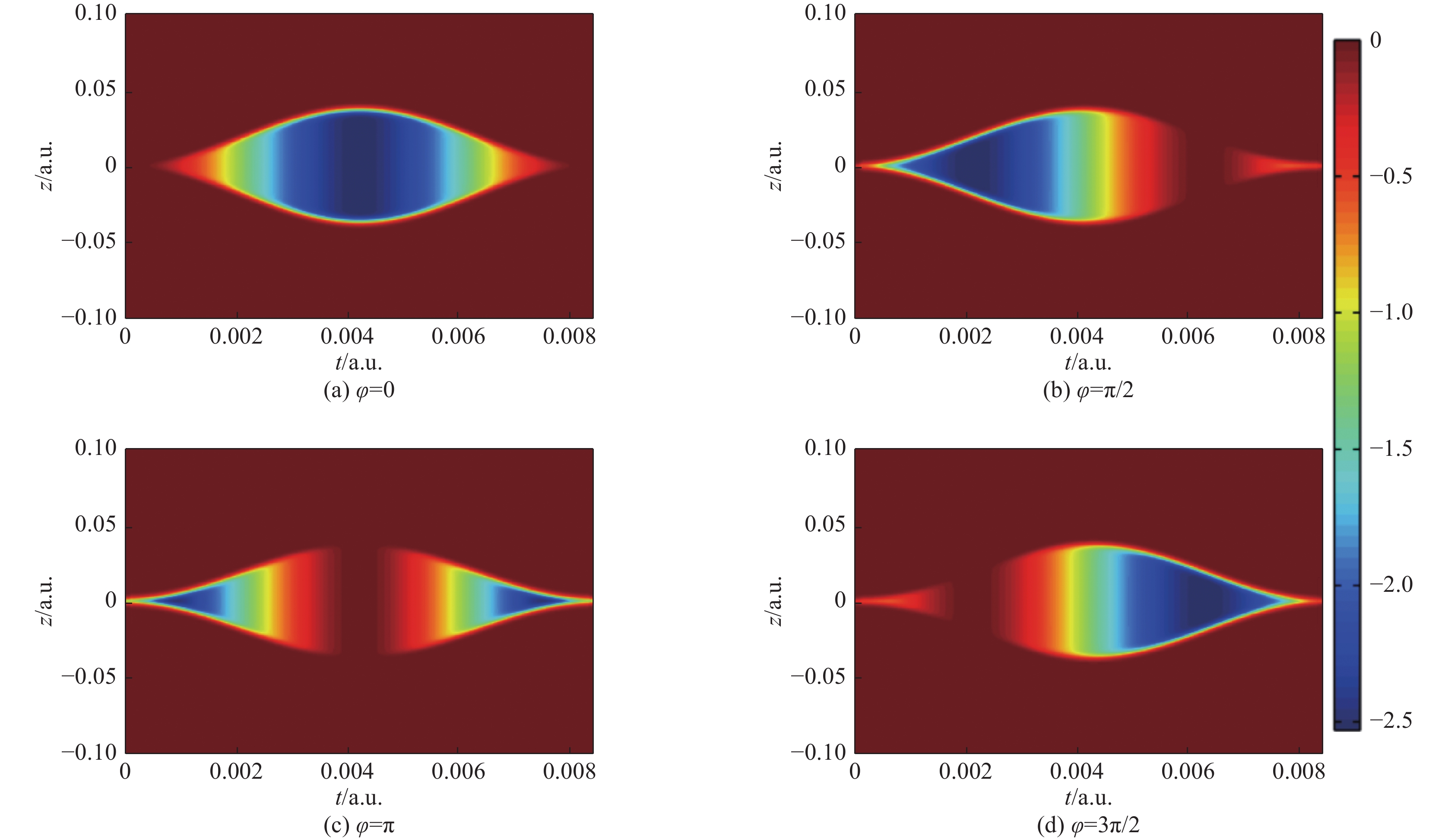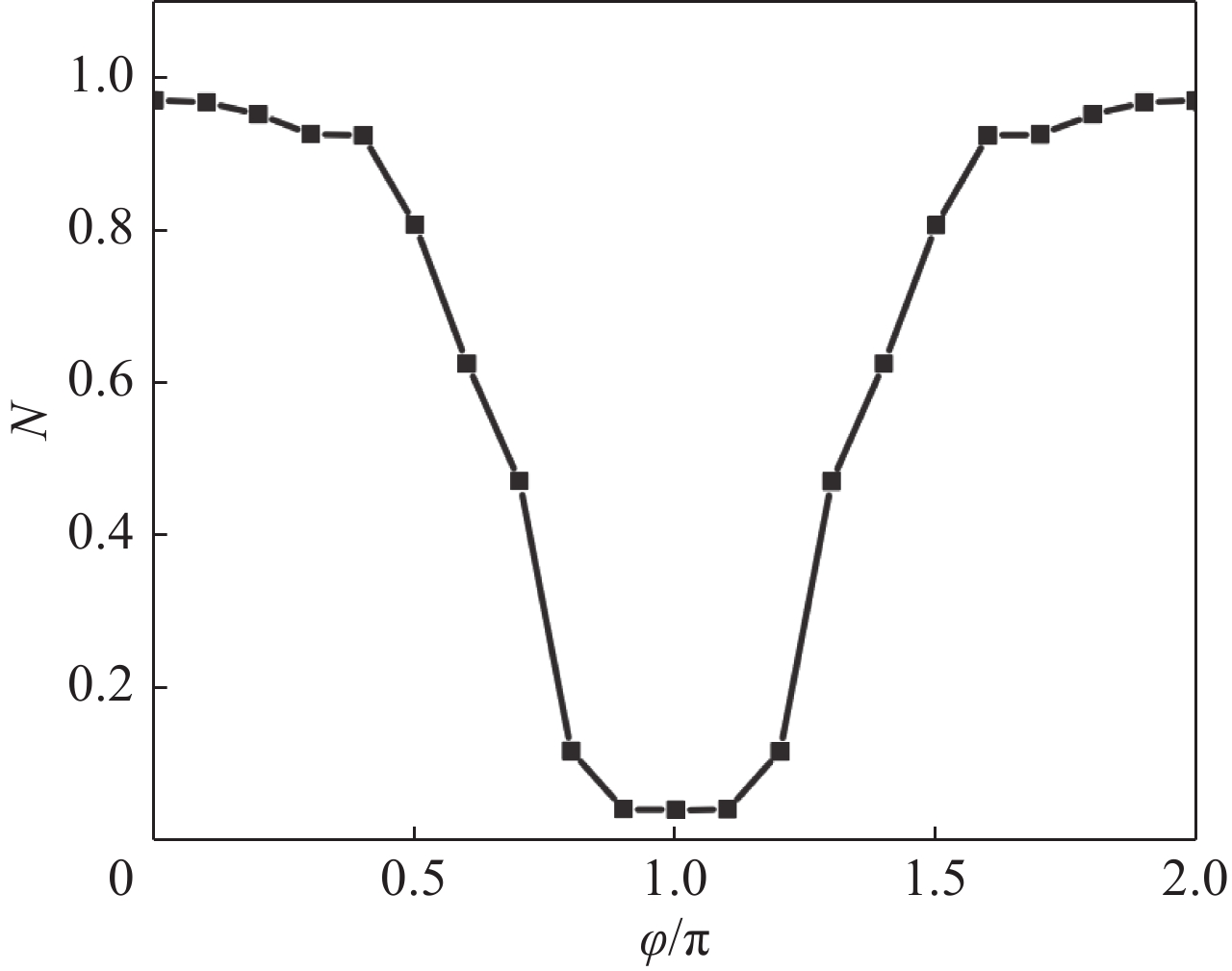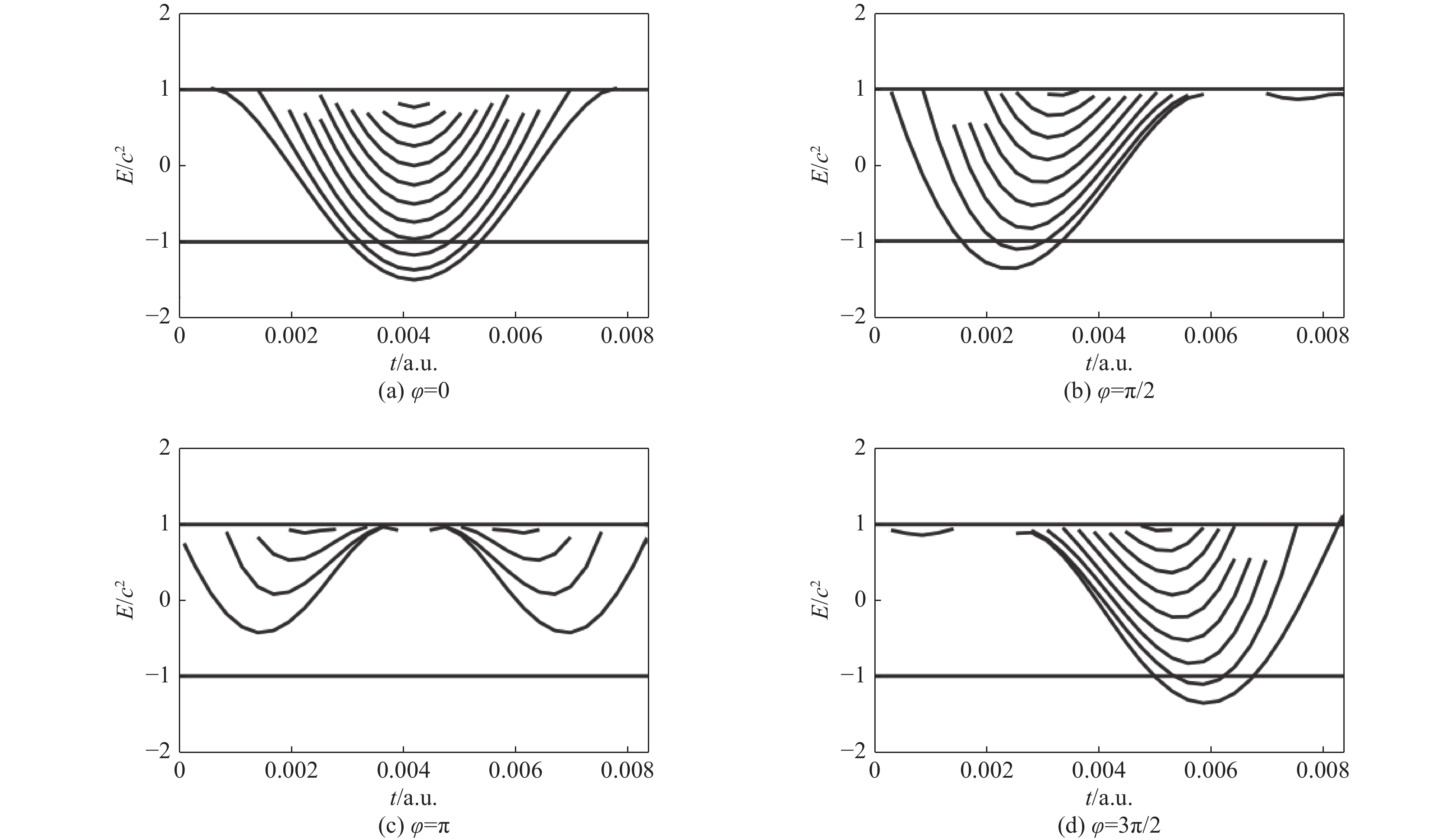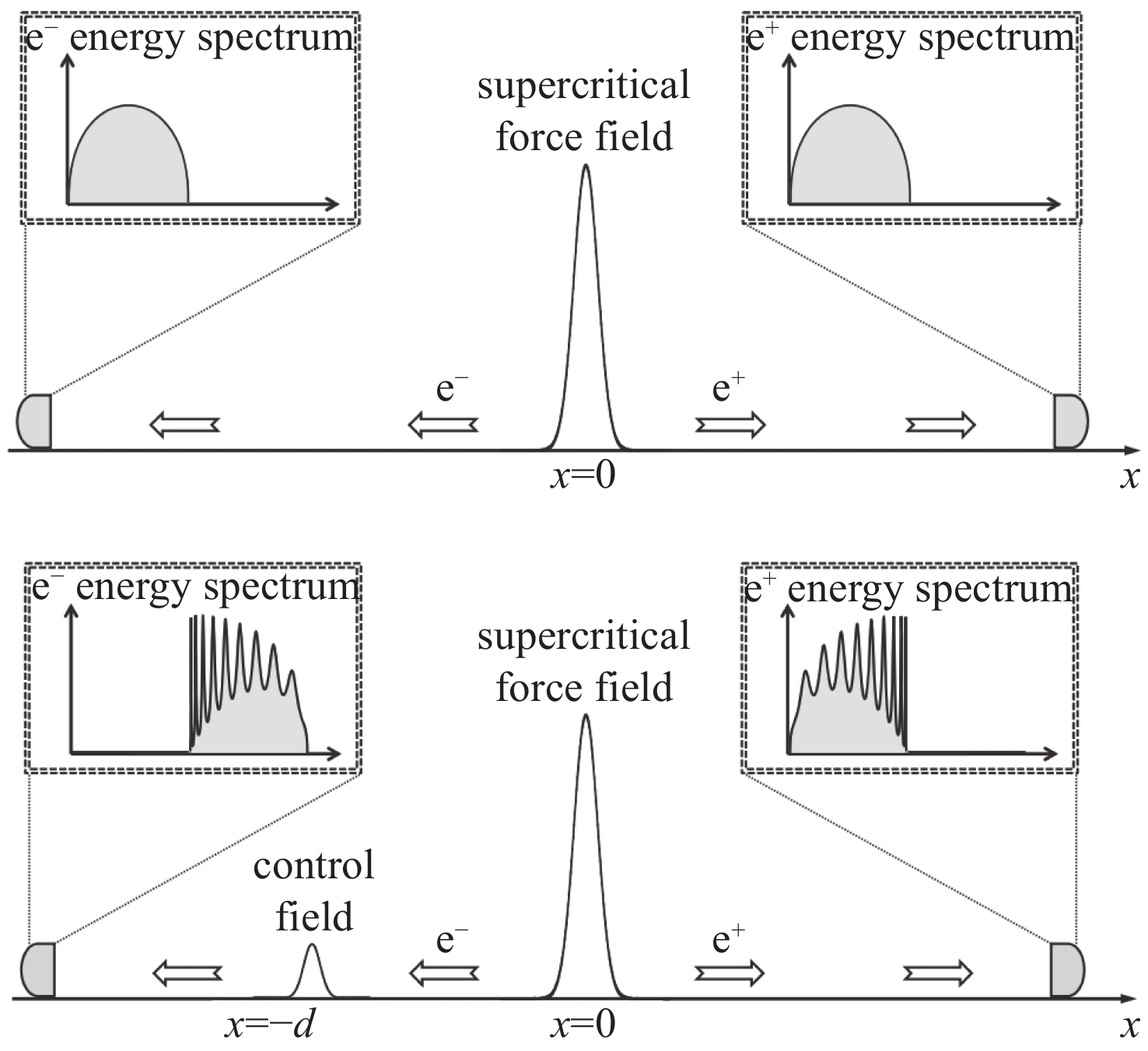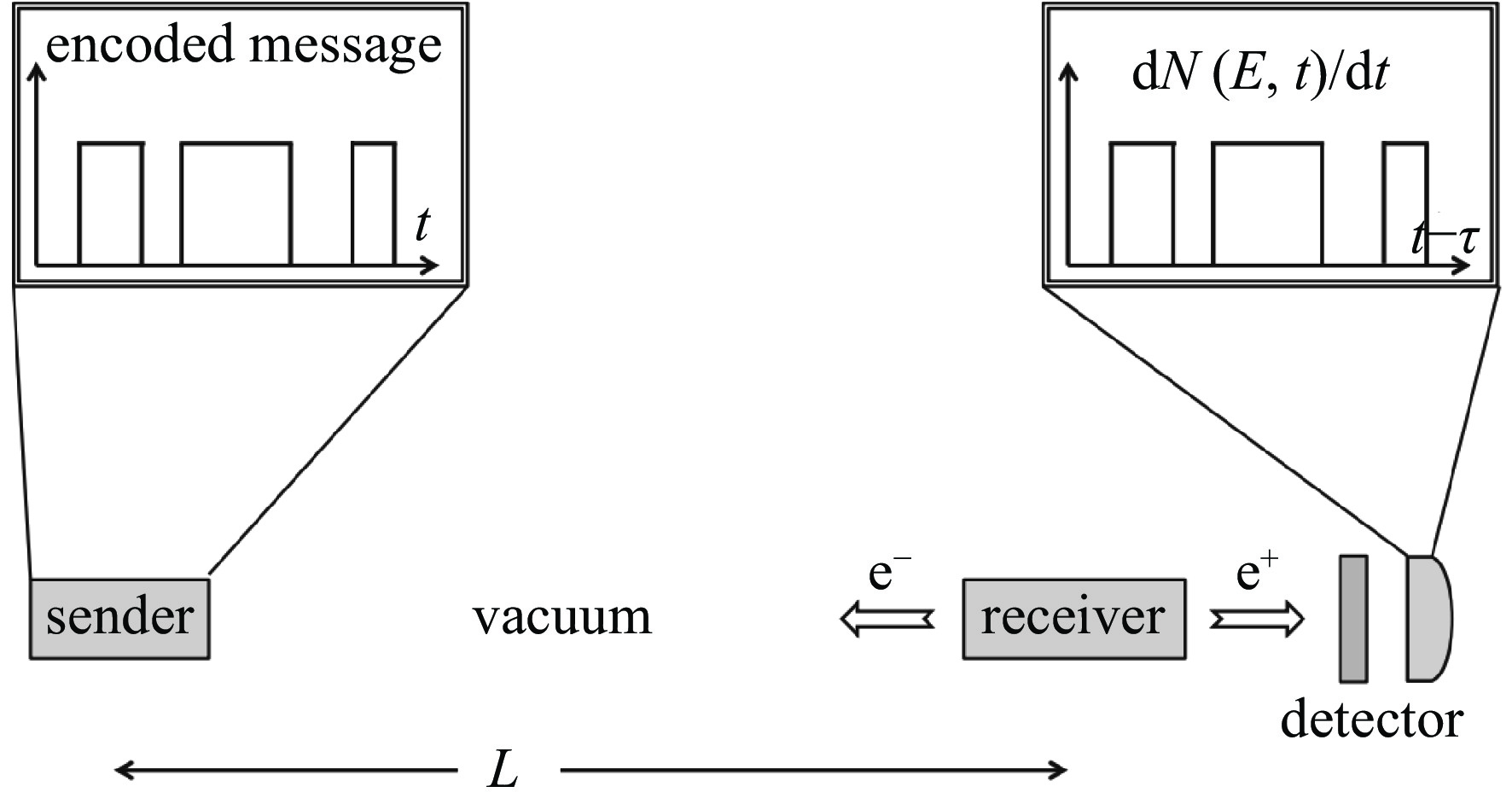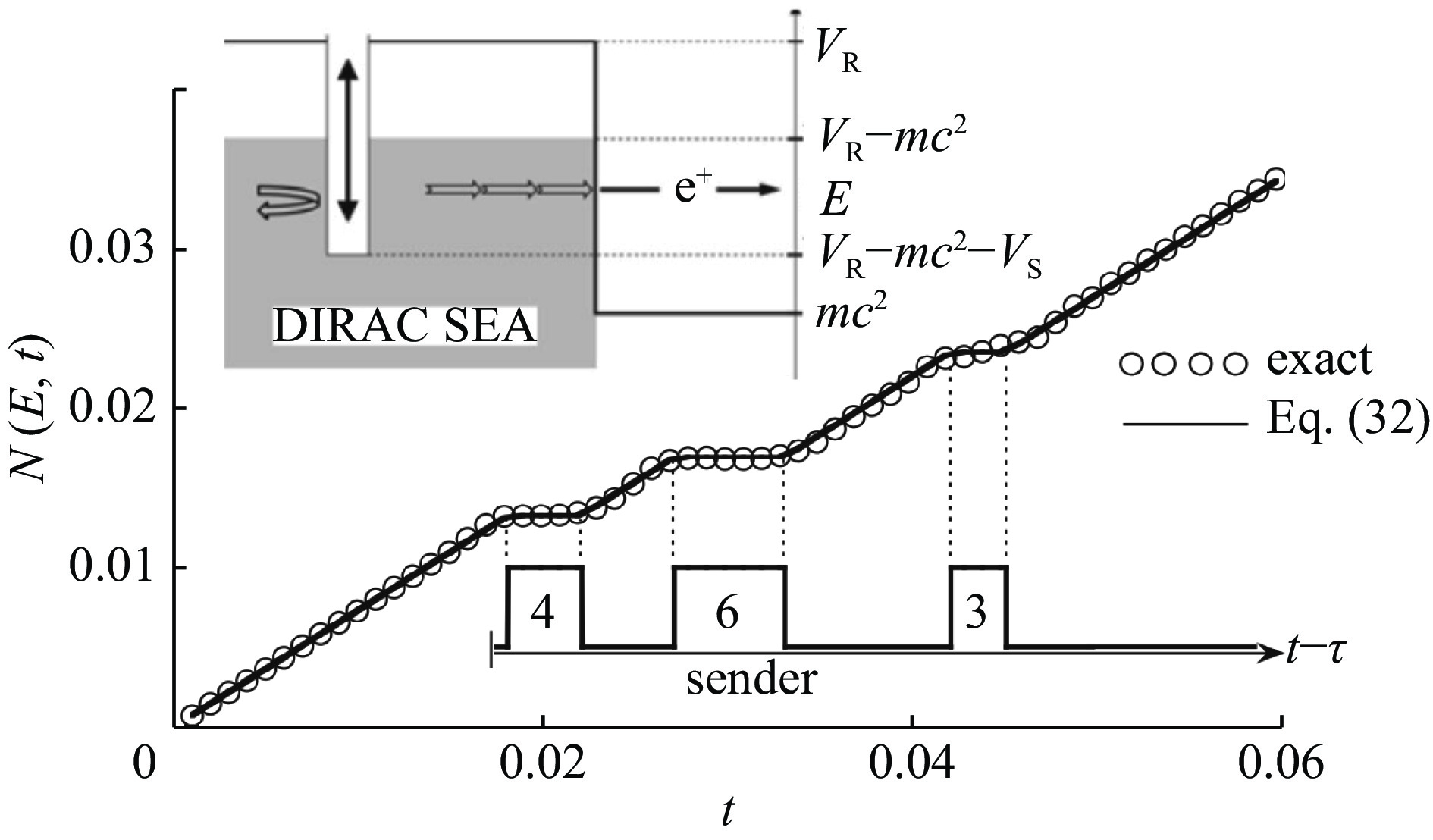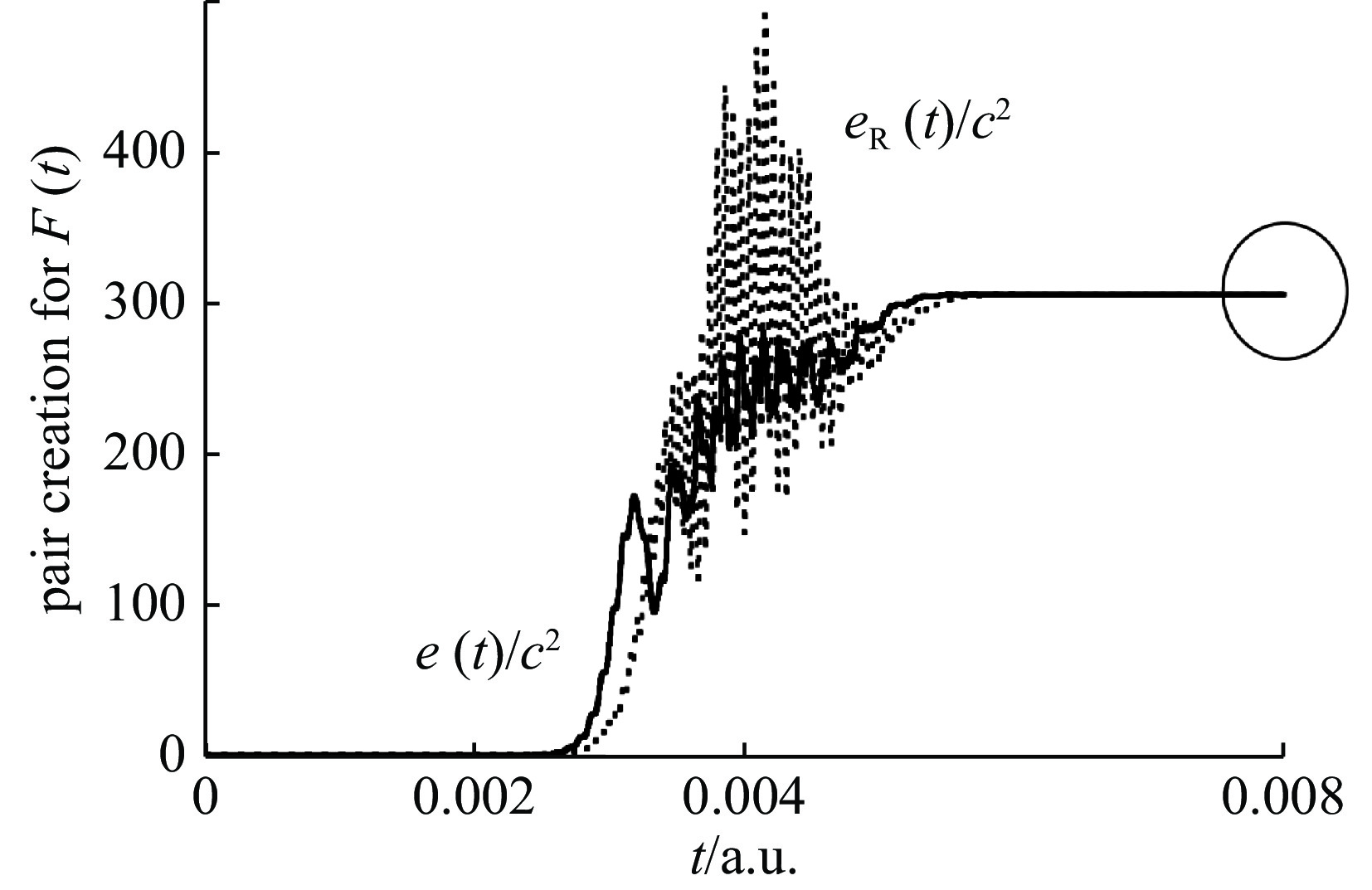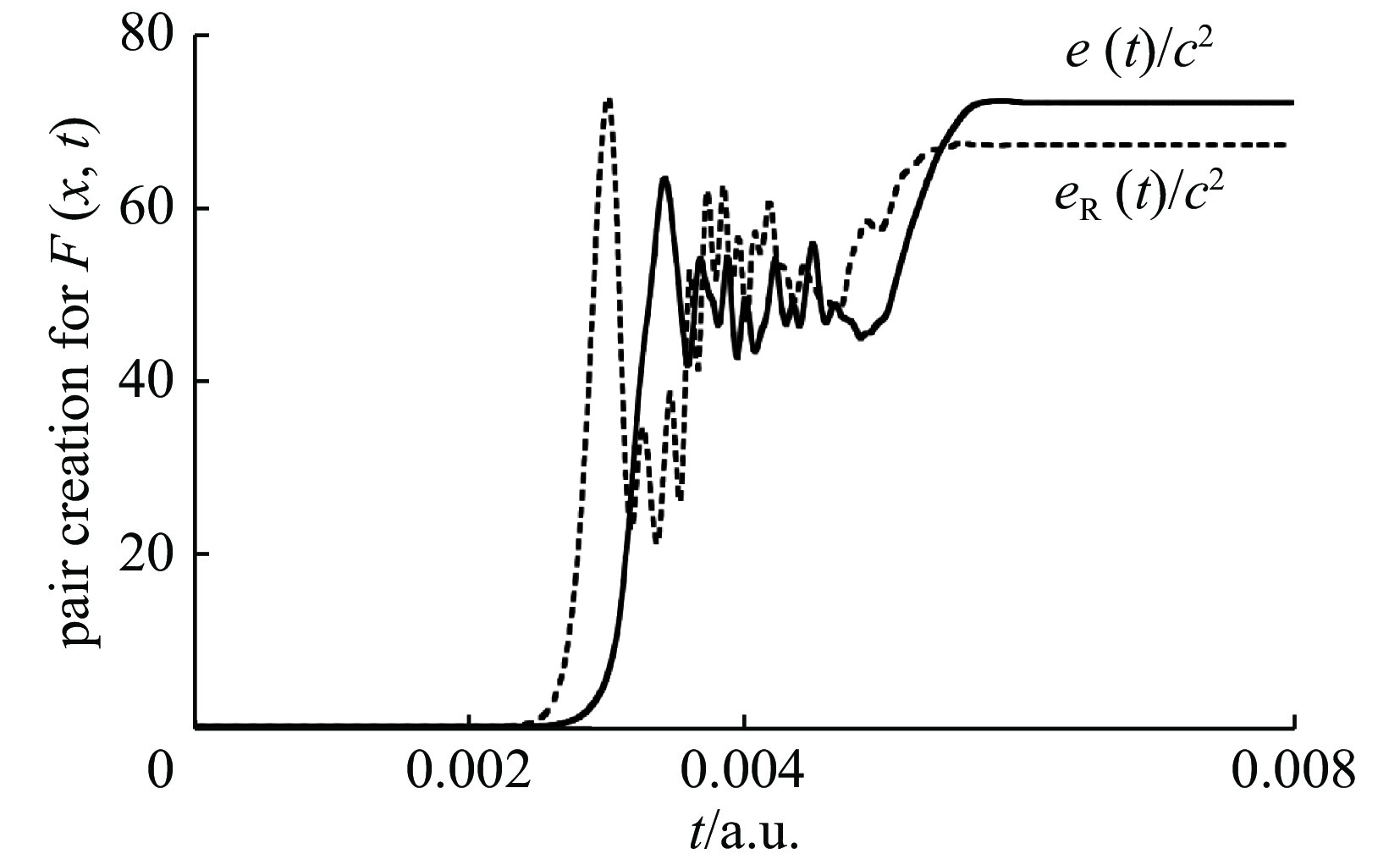Progress of pair production from vacuum in strong laser fields
-
摘要: 随着激光技术的飞快发展,激光强度不断提高,超强外场下真空中正负电子对产生的过程,即能量向质量转化过程,已经成为一个研究热点。主要综述了近几年量子Vlasov方程方法和计算量子场论(数值求解Dirac方程)方法在研究强场下真空中正负电子对产生方面的进展,分别介绍了空间均匀场和空间不均匀场下的粒子对产生的情况。第一种情况主要介绍双脉冲结构振荡电场中电子-正电子对的产生、强双频振荡电场中非微扰电子-正电子对的产生、频率调制的激光场中电子-正电子对的产生和Dirac真空对啁啾外场的快速分辨。第二种情况主要介绍优化空间局域电场提高粒子对的产生率、多个势阱-垒结构的振荡场对粒子对产生的增强、振荡 Sauter 电势中正负电子对产生的问题、操纵Dirac真空以控制其在场诱导下的衰变、作为信息传输介质的Dirac真空还有正负电子对产生中的相干和非相干啁啾机制的转变。
-
关键词:
- 强场物理 /
- 正负电子对 /
- 量子Vlasov方程 /
- 计算量子场论
Abstract: With the rapid development of laser technology and the continuous improvement of laser intensity, the process of electron-positron pair creation in vacuum under super strong external field, namely the process of energy conversion to mass, has become a research hot spot. In this paper, we mainly review the progress of quantum Vlasov equation and computational quantum field theory (numerical solution of Dirac equation) in the study of the electron-positron pair production in vacuum under intense laser field in recent years, and introduce two situations of particle pair generation spatially homogeneous field and spatially inhomogeneous field, separally. In the first case, there are electron-positron pair production in oscillating electric fields with double-pulse structure, electron-positron pair generation in the strong dual frequency oscillating electric field, electron-positron pair production in frequency modulated laser fields, and resolving rapidly chirped external fields with Dirac vacuum are introduced. The second case mainly introduces the optimization of spatially localized electric fields for electron-positron pair creation, enhanced pair creation by an oscillating potential with multiple well-barrier structures in space, electron-positron pair production in an oscillating Sauter potential, manipulation of the vacuum to control its field-induced decay and Dirac vacuum as a transport medium for information and transition between coherent and incoherent chirping mechanisms in electron-positron pair production. -
图 5 双脉冲结构的振荡电场的一般形式。脉冲的特征体现在它们的频率ωj、强度参数ξj和平台周期数Nj ( j ∈{1, 2})并且具有可变的时间延迟δ[49]
Figure 5. General form of an oscillating electric field with double-pulse structure. The pulses are characterized by their frequency ωj , intensity parameter ξj and number of plateau cycles Nj( j ∈{1, 2}) and have variable time delay δ[49]
图 6 在双脉冲电场中产生的粒子的横向动量分布,其中ξ1=ξ2=1, ω=0.49072m, N1=N2=6,时间延迟δ=0(蓝色实线)或δ=π/2m(灰色虚线曲线)。沿场方向的纵向动量分量py=0[49]
Figure 6. Transversal momentum distributions of particles created in an electric double pulse with ξ1=ξ2=1, ω=0.49072m, N1=N2=6, and time delay δ=0 (blue solid curve) or δ=π/2m (gray dashed curve). The longitudinal momentum component along the field direction vanishes, py=0[49]
图 7 在ξ1=1、ξ2=0.1、N=7、ω=0.49072m的双频电场中产生的电子的纵向动量分布 [见公式(19)]。 黑色实线(红色虚线)曲线是指φ=0 (φ=π/2 )的相对相位。横向动量px=0[49]
Figure 7. Longitudinal momentum distribution of electrons created in a bifrequent electric field with ξ1=1, ξ2=0.1, N=7, and ω=0.49072m [see Eq. (19)]. The black solid (red dashed) curve refersto a relative phase of φ=0 (φ=π/2). The transverse momentumvanishes, px=0[49]
图 8 在双频电场中产生的电子的相位的相位谱Φℓ(p),其中ξ1=1, ξ2=0.1, N=7, 和ω=0.49072m。左图为Φ1,右图为Φ2[54] (弧度范围为−π≤Φℓ≤π, 如图中颜色所示)
Figure 8. Phase-of-the-phase spectra for the electron created in a bifrequent electric field with ξ1=1, ξ2=0.1, N=7, and ω=0.49072m. Left panel: Φ1; right panel: Φ2 (each measured in rad with −π≤Φℓ≤π, as indicated by the color coding)[54]
图 9 调频电场的傅里叶变换,其中上图的调制参数(ωm, b)为(0.01, 1.52),下图的调制参数为(0.009, 9.52)。并给出了主频峰值。其他场参数为E0=0.1Ecr,τ =100/m,ω=0.5m[60]
Figure 9. The Fourier transform of the frequency modulated electric field, where the values of modulation parameter (ωm, b) are (0.01, 1.52) for the upper panel and (0.009, 9.52) for the lower panel. And the values of dominant frequency peaks are shown. Other field parameters are E0=0.1Ecr, τ =100/m, ω=0.5m[60]
图 11 产生的电子-正电子对数密度随场频率ω变化的曲线。振荡结构与n光子吸收阈值有关。上面曲线对应E0=0.1Ecr,下面曲线对应E0=0.01Ecr。其他场参数为τ=100/m。注意这里没有调频,即b=0[60]
Figure 11. The number density of created electron-positron pairs as a function of field frequency ω. The oscillating structures are related to the n-photon thresholds. The upper line corresponds to E0=0.1Ecr and the lower line corresponds to E0=0.01Ecr. Other field parameters are τ =100/m. Note that there is no frequency modulation, i.e., b=0[60]
图 12 (a)啁啾电场脉冲的E(t)随时间变化示意图。(b)不同时刻的Page-Lampard谱SPL(ω, t),对应的啁啾参数为ω0=2c2和b=c2。最下面图是E(t)的传统谱ST(ω)[62]
Figure 12. (a) Sketch of the temporal behavior of the chirped electric field pulse E(t) used in this work. (b) The Page-Lampard SPL(ω,t) spectrum taken at different time for E(t) with ω0=2c2 and b=c2. The bottom graph is the traditional spectrum ST(ω) of E(t)[62]
图 13 (a)生成的正电子数|Cp;u(t)|2的能量谱的时间导数等值线图,这是正电子能量ep的函数。(b)外加电场E(t)的Page-Lampard谱SPL(ω,t)。其他参数为Ton=0.01 a.u., Toff=0.01 a.u., T=0.025 a.u., ω0=2c2和b=c2, E0=0.005c3[62]
Figure 13. (a) Contour plot of the temporal derivative of the energy spectrum of the created number of positron |Cp;u(t)|2 as a function of the positron energy ep. (b) The Page-Lampard spectrum SPL(ω,t) of the external electric force field E(t). Other parameters are Ton=0.01 a.u., Toff=0.01 a.u., T=0.025 a.u., ω0=2c2 and b=c2, E0=0.005c3[62]
图 17 势阱时空结构的等高线图。面板(a)用于φ=0,面板(b)用于φ=π/2,面板(c)用于φ=π,面板(d)用于φ=3π/2。时间设置为t=50π/c2。其他参数为D0=10λc, V0=2.53c2和ω0=0.04c2,空间大小为L=2.5[72]
Figure 17. Contour profile plot of the spacetime structure of the potential well. Panel (a) is for φ=0, panel (b) is for φ=π/2, panel (c) is for φ=π, and panel (d) is for φ=3π/2. The simulation time is set to t=50π/c2. Other parameters are D0=10λc, V0=2.53c2, and ω0=0.04c2, the spatial size is L=2.5[72]
图 23 空心圆圈表示产生的正电子数密度N(E, t)的增长,为了比较,实线是根据方程式(32)的预测。发送者场的显示脉冲持续时间为10−3个原子单位[84]
Figure 23. The open circles show the growth of the number density of created positrons N(E, t). For comparison, the solid line is the prediction according to Eq. (32). The displayed pulse durations of the sender’s field are in 10−3 atomic units[84]
图 24 在与啁啾的外部电场相互作用过程中产生的电子能量的增长图。L=2.4 a.u., 其他参数为b=300c2, ω=2.8c2,τ=5.325×10–4 a.u., t1=0.004 a.u.和F0=5c3[87]
Figure 24. The growth of the energy of the created electrons during the interaction with a chirped external electric field. L=2.4 a.u. and the other parameters are b=300c2, ω=2.8c2, τ=5.325×10–4 a.u., t1=0.004 a.u. and F0=5c3[87]
图 25 在与啁啾的外部场相互作用时所产生的电子总能量的增长。L=2.4 a.u.,场参数为V0=5c2, W=0.5/c, D=0.6 a.u.和b=300c2, ω=2.8c2, τ=5.325×10–4 a.u.和t1=0.004 a.u.[87]
Figure 25. The growth of the total energy of the created electrons during the interaction with a chirped external field. L=2.4 and the other parameters are V0=5c2, W=0.5/c, D=0.6 a.u.and b=300c2, ω=2.8c2, τ=5.325×10–4 a.u. and t1=0.004 a.u.[87]
表 1 三种HPLS光束在ELI-NP上的工作参数[19]
Table 1. Operational parameters of the three HPLS beam lines at ELI-NP [19]
PHPLS/PW ELP/J I0max/(W·cm−2) flp/Hz operational in 10 150~225 1023 0.017 2021 1 15~25 5.6×1021 1 2020 0.1 1.5~2.5 2.2×1020 10 2020 表 2 不同调制参数组的粒子对数密度(ωm, b),见图10中标注的点[60]
Table 2. The number density for different selected sets of modulation constants (ωm, b),see the points marked in Fig. 10 [60]
(ωm, b) number density A (0, 0) 1.04×10−7 B (0.010, 1.52) 2.00×10−6 C (0.009, 9.52) 7.63×10−9 D (0.023, 2.24) 6.10×10−7 E (0.096, 0.96) 9.89×10−8 F (0.022, 8.64) 2.03×10−5 -
[1] Strickland D, Mourou G. Compression of amplified chirped optical pulses[J]. Optics Communications, 1985, 55(6): 447-449. doi: 10.1016/0030-4018(85)90151-8 [2] 张杰. 强场物理——一门崭新的学科[J]. 物理, 1997, 26(11):643-649Zhang Jie. A new horizon high field physics[J]. Physics, 1997, 26(11): 643-649 [3] Schrödinger E. Quantisierung als Eigenwertproblem[J]. Annalen der Physik, 1926, 384(4): 361-376. doi: 10.1002/andp.19263840404 [4] Gordon W. Der Comptoneffekt nach der Schrödingerschen Theorie[J]. Zeitschrift für Physik, 1926, 40(1): 117-133. Klein O. Quantentheorie und fünfdimensionale Relativitätstheorie[J]. Zeitschrift für Physik, 1926, 37(12): 895-906. [5] Dirac P A M. The principles of quantum mechanics[M]. 4th ed. Oxford: Oxford University Press, 1982. [6] Schwinger J. On gauge invariance and vacuum polarization[J]. Physical Review Journals Archive, 1951, 82(5): 664-679. [7] Bulanov S S, Esirkepov T Z, Thomas A G R, et al. Schwinger limit attainability with extreme power lasers[J]. Physical Review Letters, 2010, 105: 220407. doi: 10.1103/PhysRevLett.105.220407 [8] Fedotov A M, Narozhny N B, Mourou G, et al. Limitations on the attainable intensity of high power lasers[J]. Physical Review Letters, 2010, 105: 080402. [9] Elkina N V, Fedotov A M, Kostyukov I Y, et al. QED cascades induced by circularly polarized laser fields[J]. Physical Review Accelerators and Beams, 2011, 14: 054401. doi: 10.1103/PhysRevSTAB.14.054401 [10] Cowan T, Backe H, Bethge K, et al. Observation of correlated narrow-peak structures in positron and electron spectra from superheavy collision systems[J]. Physical Review Letters, 1986, 56(5): 444-447. doi: 10.1103/PhysRevLett.56.444 [11] Dunne G V. Extreme quantum field theory and particle physics with IZEST[J]. The European Physical Journal Special Topics, 2014, 223(6): 1055-1061. doi: 10.1140/epjst/e2014-02156-4 [12] Mocken G R, Keitel C H. FFT-split-operator code for solving the Dirac equation in 2+1 dimensions[J]. Computer Physics Communications, 2008, 178(11): 868-882. [13] Ruf M, Bauke H, Keitel C H. A real space split operator method for the Klein–Gordon equation[J]. Journal of Computational Physics, 2009, 228(24): 9092-9106. doi: 10.1016/j.jcp.2009.09.012 [14] Furry W H. On bound states and scattering in positron theory[J]. Physical Review Journals Archive, 1951, 81(1): 115-124. [15] Aleksandrov I A, Di Piazza A, Plunien G, et al. Stimulated vacuum emission and photon absorption in strong electromagnetic fields[J]. Physical Review D, 2022, 105: 116005. doi: 10.1103/PhysRevD.105.116005 [16] Kim S P, Page D N. Schwinger pair production via instantons in strong electric fields[J]. Physical Review D, 2002, 65: 105002. doi: 10.1103/PhysRevD.65.105002 [17] Dietrich D D, Dunne G V. Gutzwiller's trace formula and vacuum pair production[J]. Journal of Physics A: Mathematical and Theoretical, 2007, 40(34): F825-F830. [18] Bergues B, Ni Yongfeng, Helm H, et al. Experimental study of photodetachment in a strong laser field of circular polarization[J]. Physical Review Letters, 2005, 95: 263002. doi: 10.1103/PhysRevLett.95.263002 [19] Tanaka K A, Spohr K M, Balabanski D L, et al. Current status and highlights of the ELI-NP research program[J]. Matter and Radiation at Extremes, 2020, 5: 024402. doi: 10.1063/1.5093535 [20] Wang Weimin, Sheng Zhengming, Gibbon P, et al. Collimated ultrabright gamma rays from electron wiggling along a petawatt laser-irradiated wire in the QED regime[J]. Proceedings of the National Academy of Sciences of the United States of America, 2018, 115(40): 9911-9916. [21] Zhu Xinglong, Chen Min, Yu Tongpu, et al. Collimated GeV attosecond electron–positron bunches from a plasma channel driven by 10 PW lasers[J]. Matter and Radiation at Extremes, 2019, 4: 014401. [22] Wen M, Tamburini M, Keitel C H. Polarized laser-WakeField-accelerated kiloampere electron beams[J]. Physical Review Letters, 2019, 122: 214801. doi: 10.1103/PhysRevLett.122.214801 [23] Geng Xuesong, Ji Liangliang, Shen B F, et al. Quantum reflection above the classical radiation-reaction barrier in the quantum electro-dynamics regime[J]. Communications Physics, 2019, 2: 66. doi: 10.1038/s42005-019-0164-2 [24] Chen P. Laser cosmology[J]. The European Physical Journal Special Topics, 2014, 223(6): 1121-1129. doi: 10.1140/epjst/e2014-02163-5 [25] Jiang M, Su W, Lu X, et al. Electron-positron pair creation induced by quantum-mechanical tunneling[J]. Physical Review A, 2011, 83: 053402. doi: 10.1103/PhysRevA.83.053402 [26] Lv Q Z, Li Y J, Grobe R, et al. Quantum mechanical tunneling in multifield-induced pair creation from vacuum[J]. Physical Review A, 2013, 88: 033403. doi: 10.1103/PhysRevA.88.033403 [27] Liu Yan, Lv Q Z, Li Yutong, et al. Pair creation induced by transitions between electronic and positronic bound states[J]. Physical Review A, 2015, 91: 052123. doi: 10.1103/PhysRevA.91.052123 [28] Schützhold R, Gies H, Dunne G. Dynamically assisted Schwinger mechanism[J]. Physical Review Letters, 2008, 101: 130404. doi: 10.1103/PhysRevLett.101.130404 [29] Di Piazza A, Lötstedt E, Milstein A I, et al. Barrier control in tunneling e+ e− photoproduction[J]. Physical Review Letters, 2009, 103: 170403. doi: 10.1103/PhysRevLett.103.170403 [30] Bulanov S S, Mur V D, Narozhny N B, et al. Multiple colliding electromagnetic pulses: a way to lower the threshold of e+e− pair production from vacuum[J]. Physical Review Letters, 2010, 104: 220404. doi: 10.1103/PhysRevLett.104.220404 [31] Taya H. Dynamically assisted Schwinger mechanism and chirality production in parallel electromagnetic field[J]. Physical Review Research, 2020, 2: 023257. doi: 10.1103/PhysRevResearch.2.023257 [32] Hubbell J H. Review and history of photon cross section calculations[J]. Physics in Medicine & Biology, 2006, 51(13): R245-R262. [33] Jiang M, Lv Q Z, Sheng Z M, et al. Enhancement of electron-positron pair creation due to transient excitation of field-induced bound states[J]. Physical Review A, 2013, 87: 042503. doi: 10.1103/PhysRevA.87.042503 [34] 江淼, 郑晓冉, 林南省, 等. 正负电子对产生过程中不同外场宽度下的多光子跃迁效应[J]. 物理学报, 2021, 70:231202 doi: 10.7498/aps.70.20202101Jiang Miao, Zheng Xiaoran, Lin Nansheng, et al. Multi-photon transition effects under different external field widths in electron-positron-pair creation process[J]. Acta Physica Sinica, 2021, 70: 231202 doi: 10.7498/aps.70.20202101 [35] Burke D L, Field R C, Horton-Smith G, et al. Positron production in multiphoton light-by-light scattering[J]. Physical Review Letters, 1997, 79(9): 1626-1629. doi: 10.1103/PhysRevLett.79.1626 [36] Bamber C, Boege S J, Koffas T, et al. Studies of nonlinear QED in collisions of 46.6 GeV electrons with intense laser pulses[J]. Physical Review D, 1999, 60: 092004. doi: 10.1103/PhysRevD.60.092004 [37] Schmidt S, Blaschke D, Röpke G, et al. A quantum kinetic equation for particle production in the Schwinger mechanism[J]. International Journal of Modern Physics E, 1998, 7(6): 709-722. doi: 10.1142/S0218301398000403 [38] Dumlu C K. Schwinger vacuum pair production in chirped laser pulses[J]. Physical Review D, 2010, 82: 045007. doi: 10.1103/PhysRevD.82.045007 [39] Kohlfürst C. Electron-positron pair production in structured pulses of electric fields[DB/OL]. arXiv preprint arXiv: 1212.0880, 2012. [40] Nuriman A, Xie Baisong, Li Ziliang, et al. Enhanced electron–positron pair creation by dynamically assisted combinational fields[J]. Physics Letters B, 2012, 717(4/5): 465-469. [41] Abdukerim N, Li Ziliang, Xie Baisong. Enhanced electron–positron pair production by frequency chirping in one- and two-color laser pulse fields[J]. Chinese Physics B, 2017, 26: 020301. doi: 10.1088/1674-1056/26/2/020301 [42] Greiner W, Müller B, Rafelski J. Quantum electrodynamics of strong fields[M]. Berlin, Heidelberg: Springer, 1985. [43] Dumlu C K. Multidimensional quantum tunneling in the Schwinger effect[J]. Physical Review D, 2016, 93: 065045. doi: 10.1103/PhysRevD.93.065045 [44] Akal I, Moortgat-Pick G. Quantum tunnelling from vacuum in multidimensions[J]. Physical Review D, 2017, 96: 096027. doi: 10.1103/PhysRevD.96.096027 [45] Ahmad I I, Austin S M, Back B B, et al. Search for narrow sum-energy lines in electron-positron pair emission from heavy-ion collisions near the Coulomb barrier[J]. Physical Review Letters, 1995, 75(14): 2658-2661. doi: 10.1103/PhysRevLett.75.2658 [46] Bell A R, Kirk J G. Possibility of prolific pair production with high-power lasers[J]. Physical Review Letters, 2008, 101: 200403. doi: 10.1103/PhysRevLett.101.200403 [47] Yanovsky V, Chvykov V, Kalinchenko G, et al. Ultra-high intensity-300-TW laser at 0.1 Hz repetition rate[J]. Optics Express, 2008, 16(3): 2109-2114. doi: 10.1364/OE.16.002109 [48] Bandrauk A D, Shen Hai. High-order split-step exponential methods for solving coupled nonlinear Schrödinger equations[J]. Journal of Physics A: Mathematical and General, 1994, 27(21): 7147-7155. doi: 10.1088/0305-4470/27/21/030 [49] Granz L F, Mathiak O, Villalba-Chávez S, et al. Electron-positron pair production in oscillating electric fields with double-pulse structure[J]. Physics Letters B, 2019, 793: 85-89. doi: 10.1016/j.physletb.2019.04.026 [50] Ehlotzky F. Atomic phenomena in bichromatic laser fields[J]. Physics Reports, 2001, 345(4): 175-264. doi: 10.1016/S0370-1573(00)00100-9 [51] Schafer K J, Kulander K C. Phase-dependent effects in multiphoton ionization induced by a laser field and its second harmonic[J]. Physical Review A, 1992, 45(11): 8026-8033. doi: 10.1103/PhysRevA.45.8026 [52] Kim I J, Kim C M, Kim H T, et al. Highly efficient high-harmonic generation in an orthogonally polarized two-color laser field[J]. Physical Review Letters, 2005, 94: 243901. doi: 10.1103/PhysRevLett.94.243901 [53] Gong Xiaochun, He Peilun, Song Qiying, et al. Two-dimensional directional proton emission in dissociative ionization of H2[J]. Physical Review Letters, 2014, 113: 203001. doi: 10.1103/PhysRevLett.113.203001 [54] Braß J, Milbradt R, Villalba-Chávez S, et al. Two-color phase-of-the-phase spectroscopy applied to nonperturbative electron-positron pair production in strong oscillating electric fields[J]. Physical Review A, 2020, 101: 043401. doi: 10.1103/PhysRevA.101.043401 [55] Skruszewicz S, Tiggesbäumker J, Meiwes-Broer K H, et al. Two-color strong-field photoelectron spectroscopy and the phase of the phase[J]. Physical Review Letters, 2015, 115: 043001. doi: 10.1103/PhysRevLett.115.043001 [56] Almajid M A, Zabel M, Skruszewicz S, et al. Two-color phase-of-the-phase spectroscopy in the multiphoton regime[J]. Journal of Physics B: Atomic, Molecular and Optical Physics, 2017, 50: 194001. doi: 10.1088/1361-6455/aa896a [57] Tulsky V A, Almajid M A, Bauer D. Two-color phase-of-the-phase spectroscopy with circularly polarized laser pulses[J]. Physical Review A, 2018, 98: 053433. doi: 10.1103/PhysRevA.98.053433 [58] Würzler D, Eicke N, Möller M, et al. Velocity map imaging of scattering dynamics in orthogonal two-color fields[J]. Journal of Physics B: Atomic, Molecular and Optical Physics, 2018, 51: 015001. doi: 10.1088/1361-6455/aa975c [59] Der L. Frequency modulation (FM) tutorial[R]. Silicon Laboratories Inc, 2008. [60] Gong C, Li Z L, Xie Baisong, et al. Electron-positron pair production in frequency modulated laser fields[J]. Physical Review D, 2020, 101: 016008. doi: 10.1103/PhysRevD.101.016008 [61] Brézin E, Itzykson C. Pair production in vacuum by an alternating field[J]. Physical Review D, 1970, 2(7): 1191-1199. doi: 10.1103/PhysRevD.2.1191 [62] Gong C, Li Z L, Li Y J, et al. Resolving rapidly chirped external fields with Dirac vacuum[J]. Physical Review A, 2020, 101: 063405. doi: 10.1103/PhysRevA.101.063405 [63] Mandel L, Wolf E. Optical coherence and quantum optics[M]. Cambridge: Cambridge University Press, 1995. [64] Page C H. Instantaneous power spectra[J]. Journal of Applied Physics, 1952, 23(1): 103-106. doi: 10.1063/1.1701949 [65] Lampard D G. Generalization of the Wiener-Khintchine theorem to nonstationary processes[J]. Journal of Applied Physics, 1954, 25(6): 802-803. doi: 10.1063/1.1721733 [66] Liu Xinwei, Yuan Yaxiang. A null-space primal-dual interior-point algorithm for nonlinear optimization with nice convergence properties[J]. Mathematical Programming, 2010, 125(1): 163-193. doi: 10.1007/s10107-009-0272-y [67] Dechter R. Constraint processing[M]. San Francisco: Morgan Kaufmann Publishers, 2003. [68] Cheng T, Su Q, Grobe R. Introductory review on quantum field theory with space–time resolution[J]. Contemporary Physics, 2010, 51(4): 315-330. doi: 10.1080/00107510903450559 [69] Dong S S, Chen Min, Su Q, et al. Optimization of spatially localized electric fields for electron-positron pair creation[J]. Physical Review A, 2017, 96: 032120. doi: 10.1103/PhysRevA.96.032120 [70] Lv Q Z, Unger J, Li Yutong, et al. Spatially dependent electron-positron pair creation rate[J]. EPL (Europhysics Letters), 2016, 116: 40003. doi: 10.1209/0295-5075/116/40003 [71] Gong C, Li Z L, Li Y J. Enhanced pair creation by an oscillating potential with multiple well-barrier structures in space[J]. Physical Review A, 2018, 98: 043424. doi: 10.1103/PhysRevA.98.043424 [72] Wang Li, Wu Binbing, Xie Baisong. Electron-positron pair production in an oscillating Sauter potential[J]. Physical Review A, 2019, 100: 022127. doi: 10.1103/PhysRevA.100.022127 [73] Ren Na, Wang Jiaxiang, Li Ankang, et al. Pair production in an intense laser pulse: the effect of pulse length[J]. Chinese Physics Letters, 2012, 29: 071201. doi: 10.1088/0256-307X/29/7/071201 [74] Lv Q Z, Liu Yan, Li Y J, et al. Noncompeting channel approach to pair creation in supercritical fields[J]. Physical Review Letters, 2013, 111: 183204. doi: 10.1103/PhysRevLett.111.183204 [75] Liu Yan, Jiang M, Lv Q Z, et al. Population transfer to supercritical bound states during pair creation[J]. Physical Review A, 2014, 89: 012127. doi: 10.1103/PhysRevA.89.012127 [76] Rodriguez-Lopez P, Kort-Kamp W J M, Dalvit D A R, et al. Casimir force phase transitions in the graphene family[J]. Nature Communications, 2017, 8: 14699. doi: 10.1038/ncomms14699 [77] Xie Baisong, Li Ziliang, Tang Suo. Electron-positron pair production in ultrastrong laser fields[J]. Matter and Radiation at Extremes, 2017, 2(5): 225-242. doi: 10.1016/j.mre.2017.07.002 [78] King B, Di Piazza A, Keitel C H. A matterless double slit[J]. Nature Photonics, 2010, 4(2): 92-94. doi: 10.1038/nphoton.2009.261 [79] Mourou G A, Tajima T, Bulanov S V. Optics in the relativistic regime[J]. Reviews of Modern Physics, 2006, 78(2): 309-371. doi: 10.1103/RevModPhys.78.309 [80] Gonoskov A, Bashinov A, Gonoskov I, et al. Anomalous radiative trapping in laser fields of extreme intensity[J]. Physical Review Letters, 2014, 113: 014801. doi: 10.1103/PhysRevLett.113.014801 [81] Lv Q Z, Su Q, Grobe R. Manipulation of the vacuum to control its field-induced decay[J]. Physical Review Letters, 2018, 121: 183606. doi: 10.1103/PhysRevLett.121.183606 [82] Akkermans E, Dunne G V. Ramsey fringes and time-domain multiple-slit interference from vacuum[J]. Physical Review Letters, 2012, 108: 030401. doi: 10.1103/PhysRevLett.108.030401 [83] Krekora P, Su Q, Grobe R. Klein paradox in spatial and temporal resolution[J]. Physical Review Letters, 2004, 92: 040406. doi: 10.1103/PhysRevLett.92.040406 [84] Su Q, Grobe R. Dirac vacuum as a transport medium for information[J]. Physical Review Letters, 2019, 122: 023603. doi: 10.1103/PhysRevLett.122.023603 [85] Elitzur A C, Vaidman L. Quantum mechanical interaction-free measurements[J]. Foundations of Physics, 1993, 23(7): 987-997. doi: 10.1007/BF00736012 [86] Kwiat P, Weinfurter H, Herzog T, et al. Interaction-free measurement[J]. Physical Review Letters, 1995, 74(24): 4763-4766. doi: 10.1103/PhysRevLett.74.4763 [87] Gong C, Penwell A, Li Z L, et al. Transition between coherent and incoherent chirping mechanisms in electron-positron pair creation[J]. Journal of the Optical Society of America B, 2020, 37(4): 1098-1108. doi: 10.1364/JOSAB.382822 [88] Gong C, Su Q, Grobe R. Machine learning techniques in the examination of the electron-positron pair creation process[J]. Journal of the Optical Society of America B, 2021, 38(12): 3582-3591. doi: 10.1364/JOSAB.439484 [89] Lorin E, Yang Xu. Computation of the time-dependent Dirac equation with physics-informed neural networks[DB/OL]. arXiv preprint arXiv: 2204.02959, 2022. -




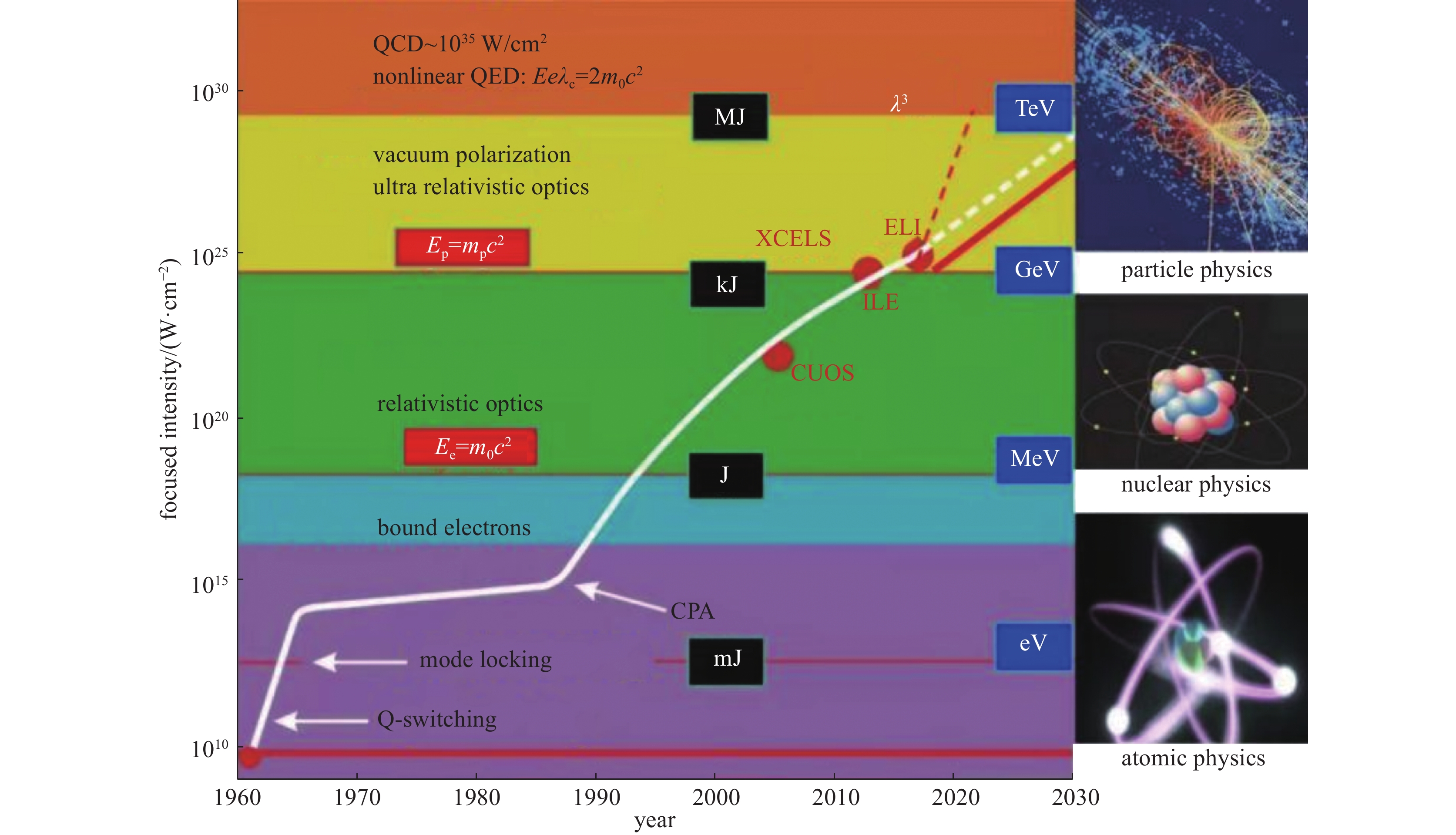
 下载:
下载:

